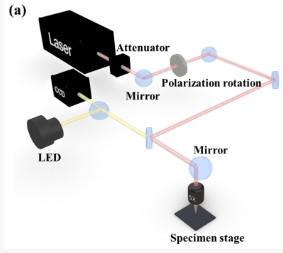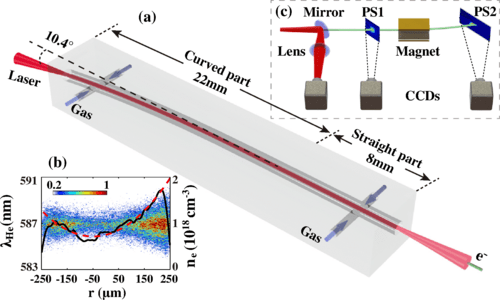There are many applications for particle accelerators, even outside research facilities, but for the longest time they have been large, cumbersome machines, not to mention very expensive to operate. Here laser wakefield accelerators (LWFAs) are a promising alternative, which uses lasers to create accelerated particles along the wake in a plasma field. One of the major struggles has been with reinjecting the thus accelerated particles into another stage of a multi-stage accelerator, which would be required to obtain energies closer to one TeV. In this area researchers have now demonstrated a way around this, by using curved channels for the laser beams (paywalled paper) which inject the laser beam into the continuous cavity.

Their plasma wakefield acceleration system construction is described in an open access 2023 paper by Hongyang Deng et al., which covers the fabrication of the capillaries that contain the waveguides for these side-injection lasers. Each capillary is created in sapphire using femtosecond laser ablation technology to create a narrow channel with the appropriate properties. During the experimental phase, the researchers found a similar problem as with the previous multi-stage reinjection of accelerated particles, in that the injected laser beam had to be properly aligned with the main channel so as not to disturb the plasma wakefield.
As for why these multi-stage LWFAs are very interesting is covered in this CERN presentation on laser-plasma acceleration. Essentially it boils down to the aforementioned properties, in terms of size and cost. Solving the reinjection issue that has so far imposed limits on the acceleration possible on account of the natural dephasing which occurs in the plasma wakefield after a certain distance should remove most of these obstacles.
Although self-injection (i.e. boosting the wakefield with a newly injected laser pulse) is not a new approach, making it work reliably and affordably has been a challenge that may now be a bit closer to being solved, and to getting us our desktop TeV-level particle accelerators.
Heading image: (a) Structure of the discharged capillary to produce the curved and straight plasma channel. (b) Spectrum distribution and calculated profile of the plasma density along the radial direction at the entrance of the discharged capillary. (c) Experimental setup for the measurements of laser guiding and electron acceleration. (Credit: Xinzhe Zhu et al., 2023)
















Lasers to create “accelerate particles”?
None of these papers were written by Egon Spengler, PhD, and there’s no mention of not crossing the streams.
In all seriousness, though, I imagine someone’s going to weaponize this before it has any practical applications.
I don’t see any sharks in the diagram. Hmmmm.
“Natural dephasing [of the] plasma wakefield” really sounds like something made up for a sci-fi novel!
I would agree but they didn’t mention Neutrinos, Causality, or Antimatter once…
So, it checks out. 😃
Wakefield is the Country Town of West Yorkshire.
https://en.wikipedia.org/wiki/Wakefield
Ay oop lad.
I’m glad these are back. I read a digest or article about them in Science News back in highschool and it seemed like such a cool thing.
Desktop particle accelerators.
Neat, I’ll put it on my desk next to my interocitor.
I mean it is a sound theory like eating is good so you don’t die but the real key will be in a reversed field excited path to really get that baby rolling and tearing holes in things. That and finding the coefficient for the field hysteresis to release that power onto a set point like a house filled with popcorn…
Could It be used for fusión ?